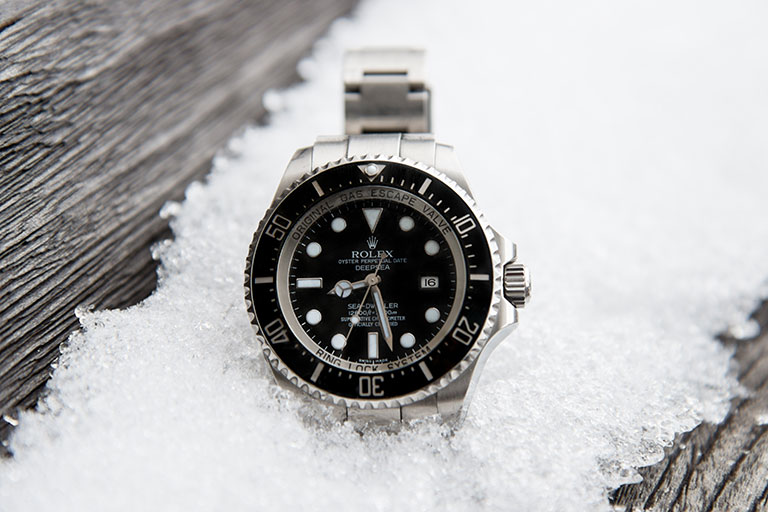The precise and historic art of mechanical watchmaking relies on the many qualities of steel to deliver enduring and reliable timepieces
While the mainstream adoption of quartz watches that use electrical power to keep time in the 1970s and 80s was expected to herald the end of more traditional timepieces, mechanical watches have been making a comeback.
A mechanical timepiece relies on a spring-powered mechanism to measure the passage of time. The mainspring, which must be wound periodically, transmits its force through a gear train to the watch’s balance wheel which rotates back and forth at a constant rate. This motion powers the movement of the watch’s hands and generates the ticking noise created by all mechanical timepieces.
With so many interlocking components that require precise movements – even simple mechanical watches have more than 100 moving parts – the reliability of the materials they are made from is paramount. As such, many mechanical watchmakers turn to steel, which can provide grades of differing hardness to perform a variety of mechanical functions within a timepiece.
 Rolex uses 904L grade stainless steel which has a harder surface and a brighter appearance than other grades
Rolex uses 904L grade stainless steel which has a harder surface and a brighter appearance than other grades
The crucible of modern steelmaking?
While modern mechanical watchmaking is reliant on the qualities of steel, the development of steel itself owes a debt to the art of timepiece manufacture. In the mid-1700s a young English clockmaker called Benjamin Huntsman had become dissatisfied with the quality of the German-made steel parts he was using for clock springs.
His need for more reliable clock mechanisms led to the development of the crucible method of steel production. Huntsman was able to generate temperatures high enough to melt iron and allow him to cast steel ingots of uniform quality in a quick and efficient manner.
This desire for a more accurate clock springs would eventually lead to one of the driving forces behind the industrial revolution – mass produced quality steel.
Making the grade
While that innovation was developed in the UK, it is Swiss watchmakers that are renowned the world over as being among the best producers of quality timepieces.
The Foundation of High Horology (FHH), based in Geneva, says that Swiss watchmakers collectively refer to a watch’s steel components as ‘les aciers’, which translates to ‘the steels’ in French, and they employ a variety of different steel grades when putting together a mechanical timepiece.
Extra hard steel is saved for the springs that power and regulate the watch
Semi-hard steels are used for the stamped and bent parts of the mechanism, as well as transmission arbors, which are a kind of axle on which the barrel containing the watch’s mainspring turns. Hard steels are used for screws and the pinion which translates the timepiece’s internal motions to the watch display.
Extra hard steel is saved for the springs that power and regulate the watch. This steel must be of very high performance and shaped to incredibly precise specifications so that the spring transfers its power smoothly and reliably.
Typically, once fully wound, a high-performance watch spring will allow the watch to keep time for between 35-45 hours before needing to be wound again.
It is not just Swiss watchmaking that represents a global standard. Mechanical watches that meet a very particular set of Swiss standards are allowed to carry the mark of ‘chronometer’ on their dial. Chronometers are timepieces that have been rated by the official Swiss testing laboratory, the Controle Officiel Suisse des Chronometeres (COSC).
The rigorous testing procedure administered by the COSC, measures a watch’s performance at three different temperatures and five separate positions for a minimum 15-day period. Only timepieces that remain accurate to -4 to +6 seconds can be awarded the chronometer certificate.
A timeless finish
Another area where watches rely on the qualities of steel is in the cases that make up the main body of the watch and shield its components. Until the 1930s, watch cases would commonly be made from more expensive and easily moulded metals, such as silver and gold.
Modern luxury brands, such as Rolex, continue to use stainless steel when making top quality watches.
While stainless steel had been invented in 1913, it wouldn’t begin being used in watch cases until the 1930s as it was previously too hard to be manipulated using traditional means. This increase in the steel’s malleability, combined with a rise in popularity of stainless steel as a fashionable choice, led to a new generation of sturdy and dazzling watches.
Modern luxury brands, such as Rolex, continue to use stainless steel when making top quality watches. The advantages of this material include the ability to withstand extreme temperatures and high corrosion resistance. Some watch cases and straps are made using steel grades that are used in making medical devices, as they have allergy-safe qualities.
Whether it is for keeping accurate mechanical time in a variety of conditions, maintaining a stunning finish or protecting delicate internal components, it’s clear that steel will continue to be the material of choice for watchmakers.
Images: iStock